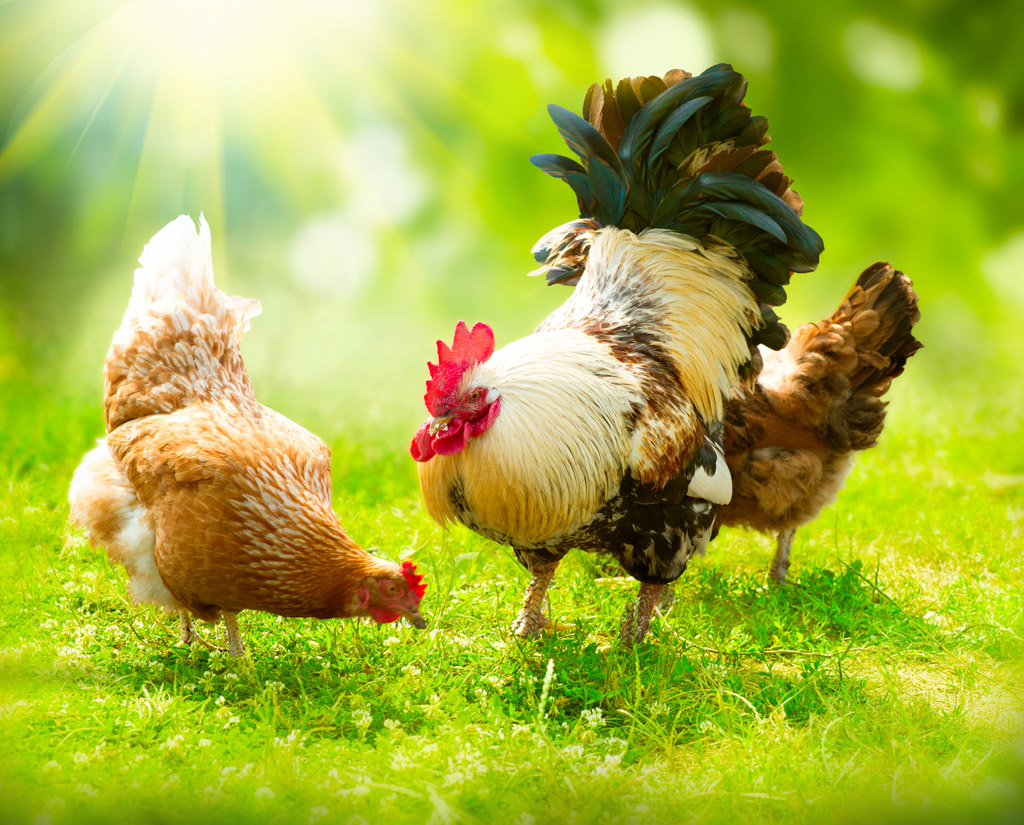
There have been several “what the cluck” moments since I decided to get pet chickens. Initially, I knew nothing about the different breeds, so I just rolled the dice when ordering them from MyPetChicken.com. Then there was the phone call from our local post office. It went something like this:
Postal Worker: Are you Mrs. Becca Edwards?
Me: Yes.
Postal Worker: Your package appears to be alive and chirping. Can you come to the post office ASAP?
Since then, I have learning curved the cluck out of being a chicken mom. When my Bantum Frizzle named Cher (because she looks identical to the actress during the 1986 Oscars) was only two days old, I had to syringe feed her and make sure to clean her tiny beak. When the bitter tundra-like temps rolled into the Lowcountry last Christmas Eve, my chickens had to live in the glassed-in guest bath shower for a few days. And then when Hen Stefanie, a Frizzle Egg Layer, became a little too keen on egg laying, I had to buy fake porcelain eggs and give her emotional support to rejoin the flock.
Life has been a little clucking ridiculous with what we lovingly call “The Rocker Chicks” (which, in addition to Cher and Hen Stefani include Blondie, Joni Mitchell, Tina Turner and Janis Joplin). We have learned quite a bit. Here are 10 takeaways from our experience thus far:
1. Buy from a reputable source. I love our local Tractor Supply store. They are some of the most helpful, knowledgeable and friendly people you will meet, but I chose MyPetChicken.com because I was able to select several different somewhat exotic breeds. (Tractor Supply has a limited selection.) Either way, get your chickens from a resource that can give you some helpful hints during that initial year. The folks at Tractor Supply are happy to talk with you in person if you have any questions and need help with coop supplies, and MyPetChicken.com has an online chat feature.
2. Love on your chickens. From day one on, we picked up our chickens, handled them with care, talked to them, and played music for them. Chickens are quite sensitive little feathered beings. They like their backs and napes scratched and will come up to you, squat and spread their shoulders for a little lovin’ much like a dog would join you on the couch for a cuddle. They like for you to tell them how pretty their wings are and will fan their feathers out. The more love you put into your chickens, the more love you will get back (which equates to a lot of eggs).
3. Skip on the rooster. You do not need a rooster to have a prolific egg-laying flock. Roosters only get you and the neighbors up too early. Plus, roosters can be aggressive toward you and can rile up the hens. One of my favorite rooster quotes is, “The best rooster is a cooked one.”
4. Feed them high quality food. According to my husband, I tend to get a bit excessive when undergoing new endeavors. But I bought a Lettuce Grow system to feed my chickens and bunnies. You do not have to go as far as an indoor hydroponic system, but you will want to feed your chickens vegetables, especially leafy greens, in addition to their other feed. Once your chickens are no longer fledglings, feed them high quality options like DuMOR 16% Organic Layer Pellets, as well as DuMOR Non-GMO 6-Grain Poultry Scratch mixed with Manna Pro Crushed Oyster Shell calcium supplement (or some sort of grit) sprinkled with dried mealworms.
5. Light clean daily. Whether your chickens are young and indoors or have made it outside, daily cleaning not only reduces their risk of infection and other issues but really makes your life easier. I use an eco-friendly poop bag to get rid of their “don’t-don’t” (my nickname for poop) and spread an organic coop refresher.
6. Invest in the best. Your chicks will need to be in a controlled environment initially. According to Backyard Poultry (an excellent resource by the way), “The ideal temperature for chicks, seven days old or younger, is 95 degrees Fahrenheit. Week two is 90 degrees, week three is 85 degrees. Each week declines by five degrees until chicks are ready to live outside.” For this reason, when your chicks are little, you will want a brooder box, a heat lamp, pine shavings, and eco-friendly poop bags to spot clean, as well as a feeder and waterer like the AOEDEAH Chicken Feeder and Waterer Set. Once your chickens transition to the outdoors, you will want to get a high-quality, weather-resistant chicken coop. Again, being a bit of an overachiever and weary of predators and sensitive to neighbors with well-landscaped yards, I have both an extra-large walk-in enclosure and a coop with two nesting boxes and plenty of room to run around. For a walk-in enclosure, I love the company Omlet. For a coop, be careful. Since COVID, I have noticed a decrease in good materials. Look at ratings. Also, I recommend a non-toxic paint if you decide to decorate your coop.

7. Make accommodations for weather. In the winter, have a heat source. My favorite is the Cozy Coop Low Wattage Heater. In the summer, when temperatures exceed 95 degrees, make a frozen block of water and veggies so your chicks can cool off.
8. Be aware of toxins. Substances used to treat your yard, such as herbicides or pesticides, as well as swimming pool chemicals, can harm your flock. Keep your chickens away from any area of your yard that has been treated with these substances, and make sure your chickens are not able to access your neighbors’ gardens or yards, either. (This is again why I have an extra-large walk-in.)
9. Collect your eggs. Our rocker chicks happen to be over-diligent mamas, so sometimes in the morning or after sunset, I have to gently pick them up and take them out of their nesting boxes, put them on the ground, and remind them to eat and drink. You do not want a chicken that overly nests and does not eat or drink enough, especially when it comes to grit. I will also tell you that I look forward to collecting our chicken eggs every morning. The hens seem so proud of themselves, and it is nice to know our breakfast burrito’s star ingredient is fresh and organic.
10. Spread the chicken love. I saved the best for last. My daughters love giving teachers, friends, and neighbors some fresh eggs. It truly brings a big clucking smile to people’s faces. And as a bonus, people typically send us their best egg recipes, which is great because we sometimes get in an egg-recipe rut. We even score a deviled egg or two dozen from time to time.
Becca Edwards is a wellness professional, freelance writer, and owner of Female IQ (femaleIQ.com).


